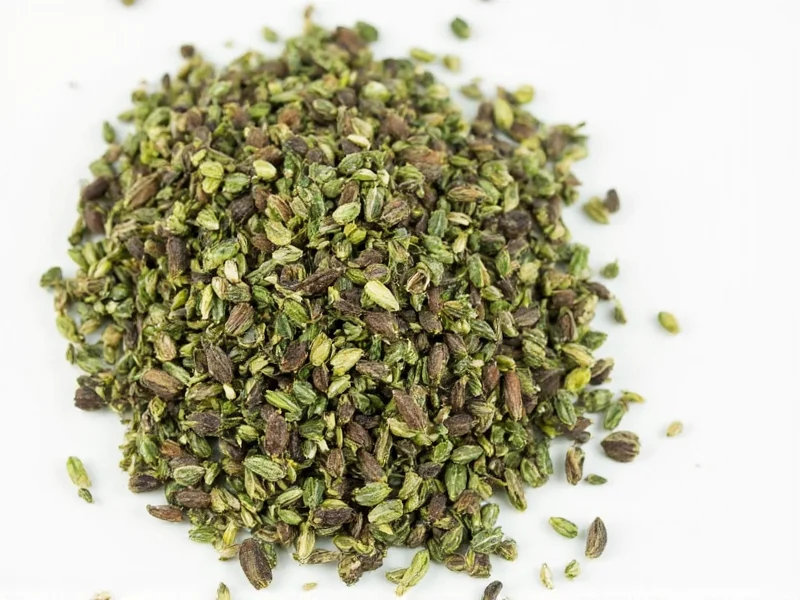Understanding Dried Thyme: Nature's Flavor Concentrate
Dried thyme represents one of the most valuable transformations in the culinary world, converting delicate fresh herb sprigs into a shelf-stable flavor powerhouse. The drying process removes moisture while concentrating thymol and carvacrol—the essential oil compounds responsible for thyme's distinctive earthy, slightly minty flavor profile. Unlike many herbs that lose complexity when dried, thyme actually develops deeper, more robust notes that withstand extended cooking times.
Dried vs Fresh Thyme: The Essential Conversion Guide
Understanding the dried thyme vs fresh thyme conversion ratio is critical for recipe success. Professional chefs universally recommend a 1:3 substitution ratio—meaning one teaspoon of dried thyme equals three teaspoons (one tablespoon) of fresh thyme. This accounts for both the moisture loss during drying and the concentration of flavor compounds.
| Measurement | Fresh Thyme | Dried Thyme |
|---|---|---|
| Teaspoon | 3 tsp | 1 tsp |
| Tablespoon | 1 tbsp | 1 tsp |
| Cup | 3 cups | 1 cup |
When executing proper dried thyme substitution, remember that dried herbs require longer cooking time to rehydrate and release their full flavor potential. Add dried thyme early in the cooking process for soups, stews, and braises, while fresh thyme works better as a finishing garnish.
The Science Behind Thyme Drying
Thyme's exceptional performance when dried stems from its unique chemical composition. The herb contains approximately 40% thymol, a phenolic compound with remarkable stability during dehydration. Unlike basil or cilantro which lose volatile compounds rapidly when dried, thyme's robust essential oils withstand the drying process with minimal degradation.
Research published in the Journal of Agricultural and Food Chemistry confirms that properly dried thyme retains 85-92% of its original antioxidant capacity when dehydrated at temperatures below 35°C (95°F). This scientific insight explains why dried thyme remains nutritionally valuable despite moisture removal.
Optimal Culinary Applications for Dried Thyme
Dried thyme shines in specific cooking techniques where its concentrated flavor provides distinct advantages:
- Slow-cooked dishes: Perfect for beef bourguignon, coq au vin, and vegetable potages where extended simmering allows flavor integration
- Dry rubs and spice blends: Essential in herbes de Provence, za'atar, and barbecue rubs where moisture would compromise texture
- Bread doughs and baked goods: Ideal for focaccia, herb breads, and savory scones where fresh herbs would create unwanted moisture pockets
- Bean and legume dishes: Complements the earthy notes in lentil soups, chickpea stews, and bean salads
Professional chefs recommend adding dried thyme during the sauté phase when building flavor foundations—typically when onions and garlic hit the pan. This "blooming" technique in oil releases maximum flavor compounds before liquid ingredients dilute the mixture.
Storage Best Practices for Maximum Flavor Retention
Proper dried thyme storage directly impacts shelf life and flavor intensity. Follow these evidence-based storage guidelines:
- Use airtight glass or metal containers (plastic can absorb essential oils)
- Store in a cool, dark location away from heat sources (ideal temperature: 60-70°F/15-21°C)
- Maintain relative humidity below 60% to prevent moisture absorption
- Never store above the stove or near dishwasher heat vents
- Label containers with purchase date for freshness tracking
When stored correctly, high-quality dried thyme maintains peak flavor for 12-18 months. After two years, while still safe to consume, flavor intensity diminishes significantly. Conduct a simple freshness test: rub a small amount between your fingers—if the aroma is weak or musty, it's time for replacement.
Quality Assessment: Identifying Premium Dried Thyme
Not all dried thyme products deliver equal quality. Evaluate potential purchases using these professional criteria:
- Color: Vibrant olive-green to grayish-green (avoid brown or yellowish tones)
- Texture: Crisp but not powdery (excessive powder indicates age or poor processing)
- Aroma: Strong, penetrating herbal scent with earthy undertones
- Leaf integrity: Whole or mostly intact leaves (excessive stems indicate poor processing)
- Moisture content: Should feel completely dry with no coolness when touched
When evaluating dried thyme shelf life indicators, remember that premium products contain minimal stem material—ideally less than 5%. High stem content reduces flavor concentration and can introduce bitter notes during cooking.
Nutritional Profile and Evidence-Based Benefits
Dried thyme packs impressive nutritional density relative to its volume. One tablespoon (2 grams) provides:
- 12% of daily manganese needs
- 6% of iron requirements
- Significant flavonoid antioxidants
- Thymol with documented antimicrobial properties
Research from the Journal of Medicinal Food confirms that dried thyme maintains higher concentrations of rosmarinic acid than fresh thyme due to concentration effects. This compound demonstrates potent anti-inflammatory properties in clinical studies. However, culinary usage amounts provide flavor enhancement rather than therapeutic doses.
Common Dried Thyme Mistakes to Avoid
Even experienced cooks make these dried thyme errors:
- Adding too late in cooking: Dried herbs need 20-30 minutes to rehydrate and release flavors
- Overpacking measuring spoons: Lightly fill spoons without pressing down
- Using expired product: Stale dried thyme lacks flavor impact regardless of quantity
- Substituting without ratio adjustment: Using equal amounts of dried instead of fresh creates overpowering results
- Storing in clear containers: Light exposure rapidly degrades essential oils
For optimal results with dried thyme culinary uses, remember that less often delivers more. Start with conservative amounts and adjust during cooking—dried thyme's intensity makes correction difficult once over-applied.











 浙公网安备
33010002000092号
浙公网安备
33010002000092号 浙B2-20120091-4
浙B2-20120091-4